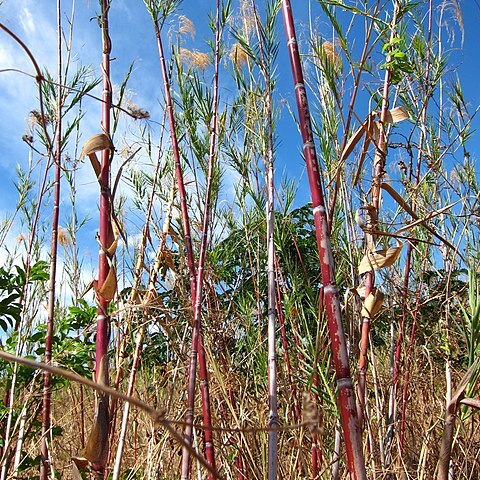Robust perennial up to 5 m high; rhizomes long; culms tillering from lower nodes; leaves cauline, deciduous at base of sheath. Leaf blade 300 x 30 mm, apex sharp, rigid (young leaves usually more rigid and spiny than P. australis), scabrid beneath (at least in upper half); Inflorescence broad, 200-400 mm long, with ring of silky hairs at base of lowest branches. Spikelet 7-15 mm long; upper glume 3-5 mm long, shortly acuminate; lemma glabrous; callus hairs 4-7 mm long; anther 1.5-2.0 mm long.
Perennial; up to 5 m high; long-rhizomatous. Culms robust; tillering from lower nodes; leaves deciduous at base of sheath leaving culm bare. Leaf blades up to 30 x 30 mm; apex stiff and pungent; leaves cauline; ligule with fringing hairs equalling or longer than membranous base. Flowers: panicle open; lax; 200-400 mm long; spikelets 7-15 mm long; upper glume 3-5 mm long; shortly acuminate; lemmas glabrous; callus hairs 4-7 mm long.
Perennial, long-rhizomatous, up to 5 m high. Leaf blades up to 30 mm long, 30 mm wide, leaves cauline, deciduous at base of sheath; blades with sharp, rigid tips; ligule with fringing hairs equaling or longer than membranous base. Culms robust, tillering from lower nodes. Spikelets 7-15 mm long. Inflorescence broad and lax, 200-400 mm long; upper glume 3-5 mm long. Lemmas glabrous.


